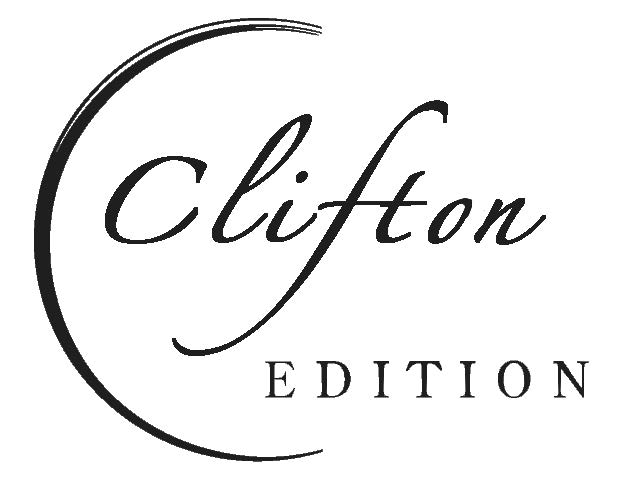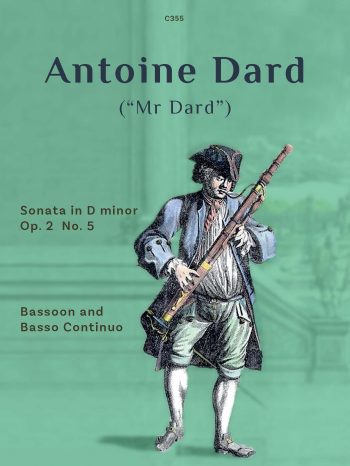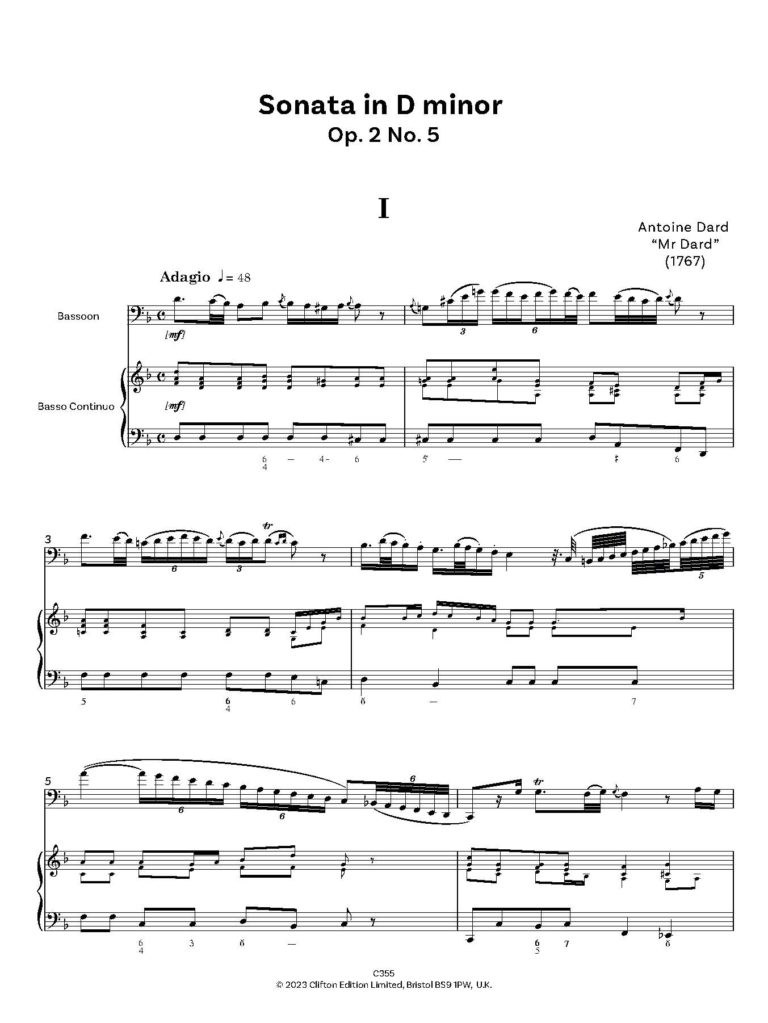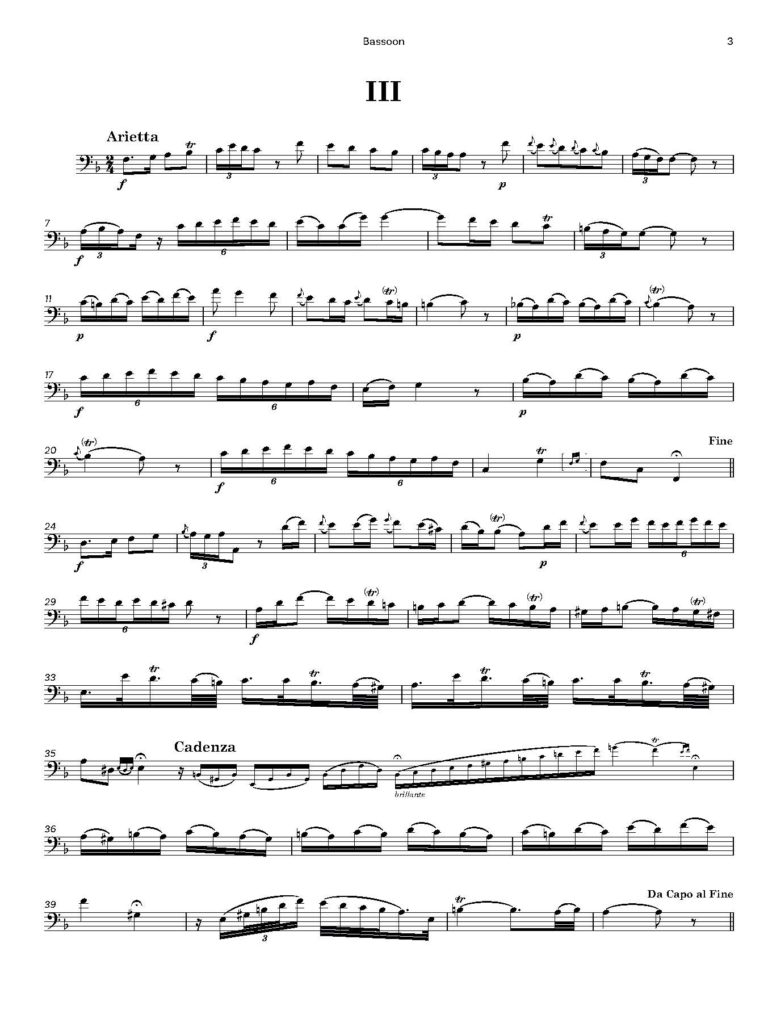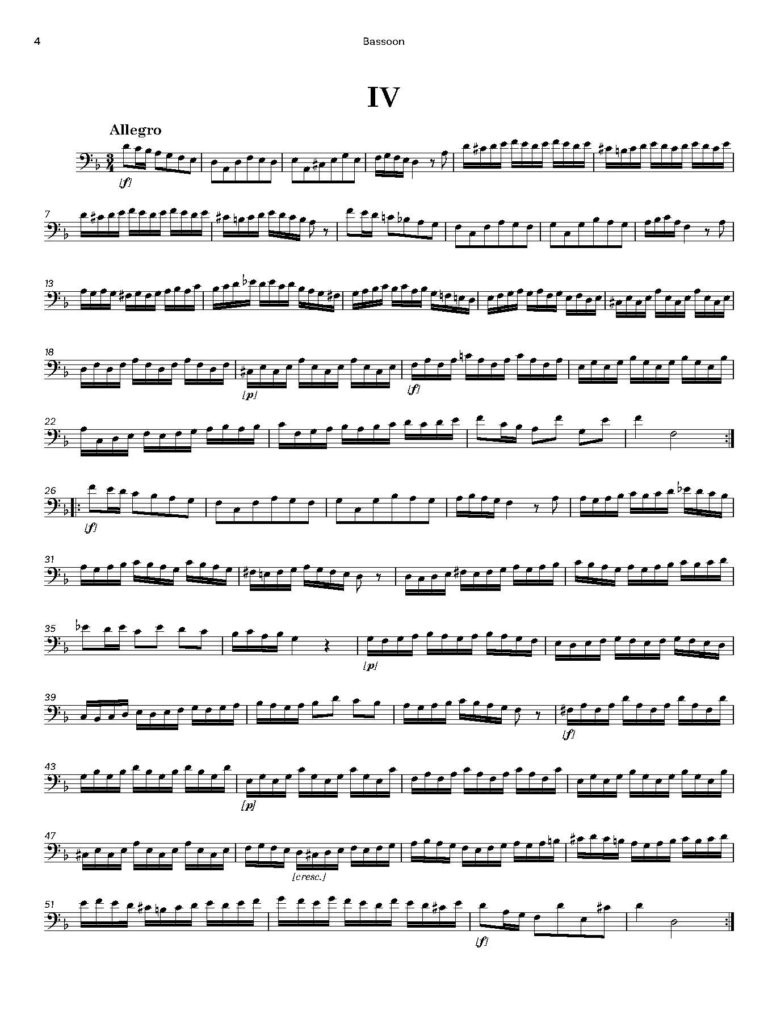Piano score plus parts included for both solo bassoon and (optional) basso continuo.
Contents
- Adagio
- Allegro
- Allegro
- Arietta
Antoine Dard (“Mr Dard”) was a French composer, born in 1715 in Burgundy. Hardly anything is known about his musical education, although it is possible he entered the choir school of Mâcon cathedral, to which Chapaize belonged at the time.
At the end of the 1750s Dard moved to Paris and in 1760 was appointed as 5th bassoonist in the orchestra of the Académie Royale de Musique. Three years later he was promoted to leader of the bassoon section in the orchestra. His activities as a player seem to have ended in 1778, and in 1784 he died at the age of 69.
Dard published two collections of sonatas for bassoon and transverse flute respectively.
The six sonatas for bassoon were published in 1759 as his opus 2, although they were written before his opus 1, the sonatas for transverse flute. They were dedicated to M. Duvaucel, Grand Master of Water and Forests for Île de France.
Among the technical difficulties are the range of these sonatas. They went into the highest register of the bassoon (at the time), well beyond the Bb of Mozart’s bassoon concerto. The high register would not become standard for sixty years after Dard, and only after innumerable improvements in instrument design.
But these sonatas are more than just a sampling of technical fireworks. There is a lot of expression in these sonatas too, and some have an irresistable rhythm.
